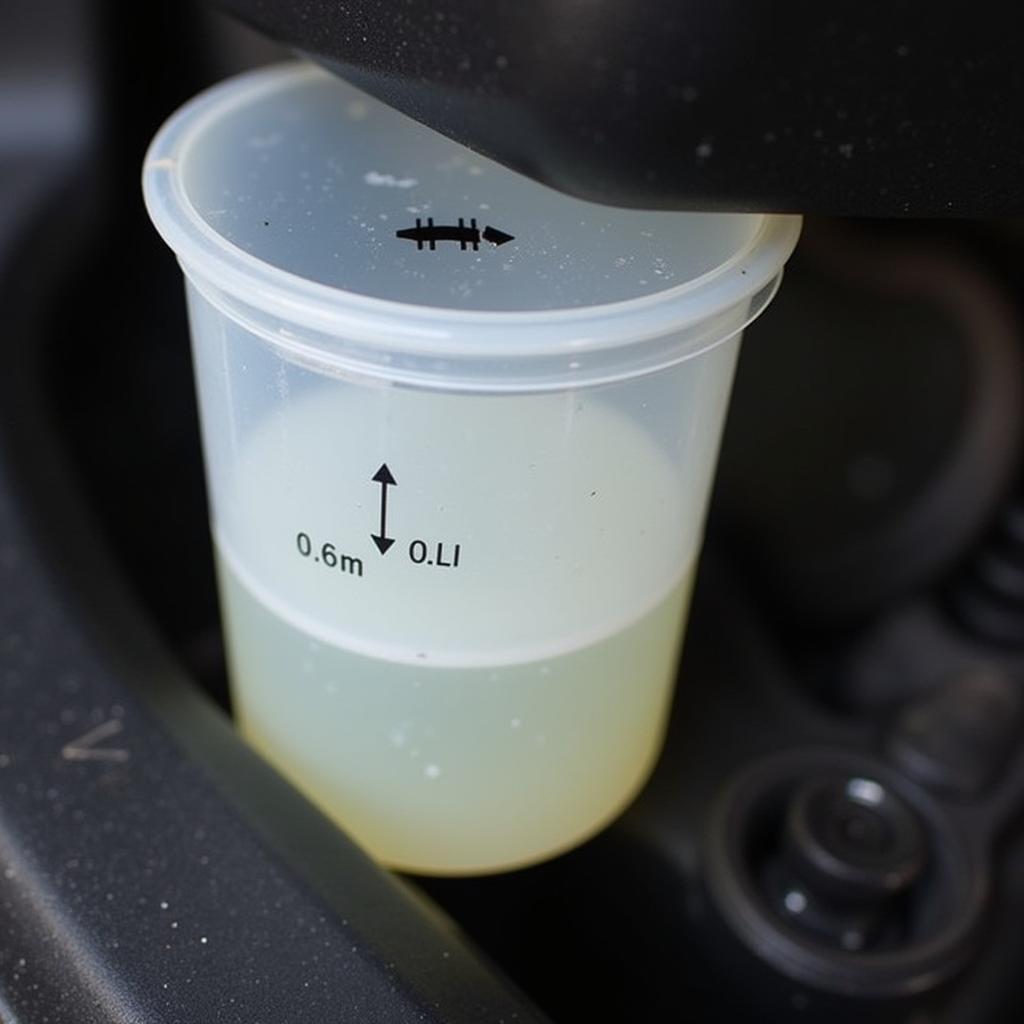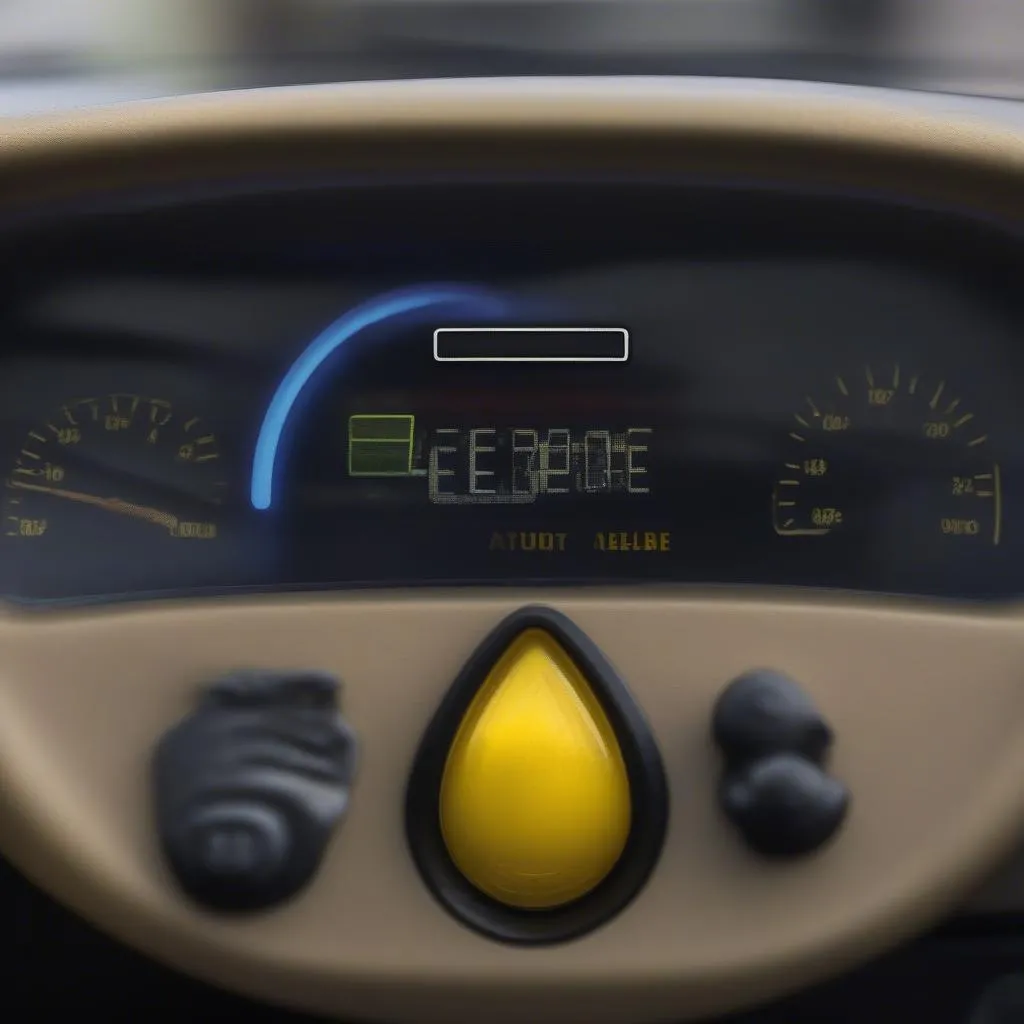The brake pressure warning switch is a vital safety component in your 1988 Dodge B-350. It serves to alert you of a potential issue with your braking system by illuminating a warning light on your dashboard. When this switch malfunctions, you might experience a constantly lit brake warning light, even when there’s no actual problem with your brakes. This can be a cause for concern and requires immediate attention.
While diagnosing car problems can seem daunting, understanding the basics of the brake pressure warning switch and knowing how to troubleshoot it can save you time and money in the long run. This article aims to guide you through the process of diagnosing and potentially fixing a faulty brake pressure warning switch in your 1988 Dodge B-350.
Understanding the Brake Pressure Warning Switch
The brake pressure warning switch, often located on the brake master cylinder, acts like a messenger between your brake lines and the dashboard warning light. Its primary function is to detect imbalances in the hydraulic pressure within the brake system. When you press the brake pedal, this pressure increases. If the switch detects a significant pressure difference between the two hydraulic circuits, it triggers the brake warning light on your dashboard, signaling a potential problem.
Common Symptoms of a Bad Brake Pressure Warning Switch
Before you start tinkering under the hood, it’s essential to confirm that the brake pressure warning switch is indeed the culprit. Here are some telltale signs that indicate a potential problem with your switch:
- Constantly illuminated brake warning light: This is the most obvious sign. If the warning light stays on even when you haven’t applied the brakes, it’s a strong indication of a faulty switch.
- Intermittent brake warning light: The light might flicker on and off while driving or stay on only under specific conditions, suggesting a failing switch.
- No brake warning light: On the other end of the spectrum, if you have a genuine brake issue, but the warning light doesn’t illuminate, the switch might be the reason.
Diagnosing a Faulty Brake Pressure Warning Switch
Here’s a step-by-step guide to help you diagnose a faulty brake pressure warning switch:
-
Check the brake fluid level: Before you suspect the switch, ensure your brake fluid reservoir is full. Low brake fluid can also trigger the warning light.
-
Locate the brake pressure warning switch: In your 1988 Dodge B-350, you can usually find it mounted on the brake master cylinder.
-
Inspect the switch and wiring: Look for any visible damage to the switch itself, such as cracks, leaks, or loose connections. Also, inspect the wiring harness connected to the switch for any signs of wear or damage.
-
Test the switch with a multimeter: A multimeter can be used to check the switch’s continuity. With the ignition off, disconnect the electrical connector from the switch. Set the multimeter to the continuity setting and touch the probes to the switch’s terminals. You should hear a beep when the brake pedal is pressed and no beep when it’s released. If not, the switch is likely faulty.
Replacing the Brake Pressure Warning Switch
If your diagnosis points towards a faulty switch, replacing it is a relatively straightforward procedure:
-
Disconnect the battery: Before working on any electrical components, always disconnect the negative battery cable to prevent electrical shorts.
-
Remove the electrical connector: Carefully detach the electrical connector from the old switch.
-
Unscrew the old switch: Use a wrench to loosen and remove the old switch from the master cylinder.
-
Install the new switch: Apply a small amount of thread sealant to the threads of the new switch and screw it into the master cylinder. Tighten it securely, but avoid over-tightening.
-
Reconnect the electrical connector: Attach the electrical connector to the new switch.
-
Reconnect the battery and test: Reconnect the negative battery cable and turn on the ignition. The brake warning light should turn off after starting the engine. Press and release the brake pedal to ensure the switch is functioning correctly.
Consulting a Qualified Mechanic
While this guide provides a basic overview of troubleshooting a faulty brake pressure warning switch, remember that working on your vehicle’s braking system can be dangerous if you’re not comfortable with car repairs.
“It’s always best to consult with a qualified mechanic if you are unsure about any aspect of the repair process,” advises John Smith, a veteran automotive electrician with over 20 years of experience. “Brakes are crucial for your safety, and any mistakes can have serious consequences.”
Conclusion
A malfunctioning brake pressure warning switch can be a nuisance and a potential safety hazard. By understanding how it works and learning to troubleshoot it, you can ensure your 1988 Dodge B-350 remains safe on the road. While DIY repairs can be satisfying, always prioritize safety and don’t hesitate to seek professional help if needed.


